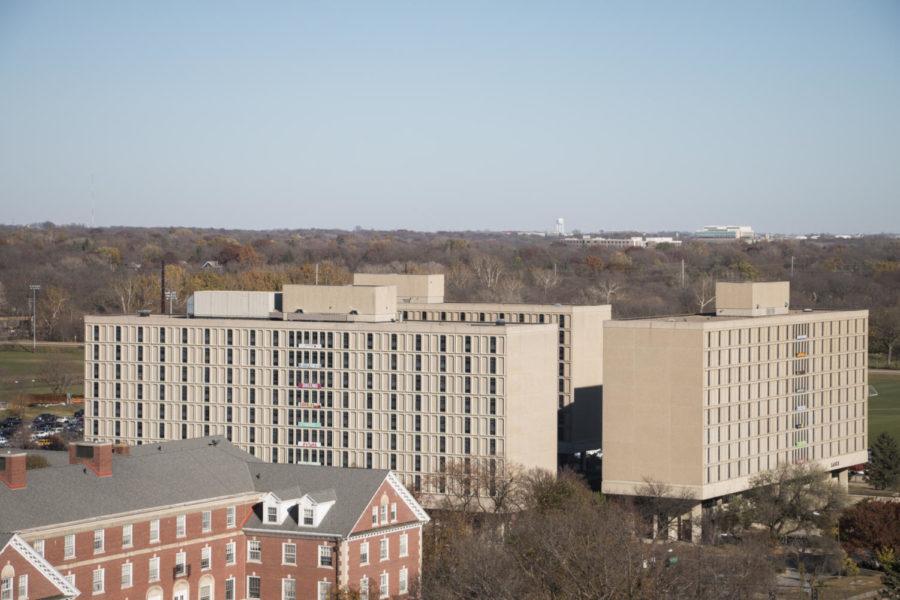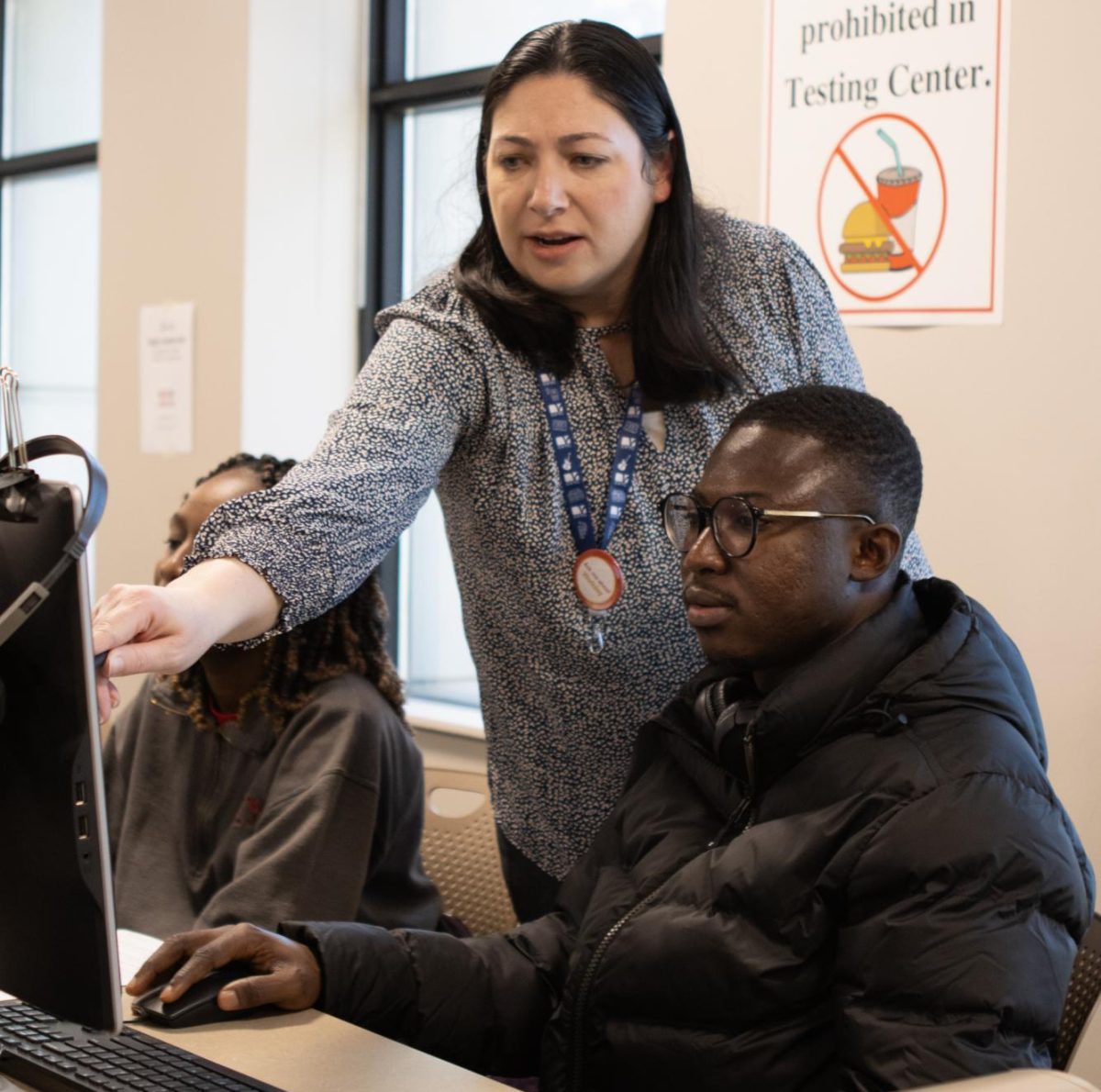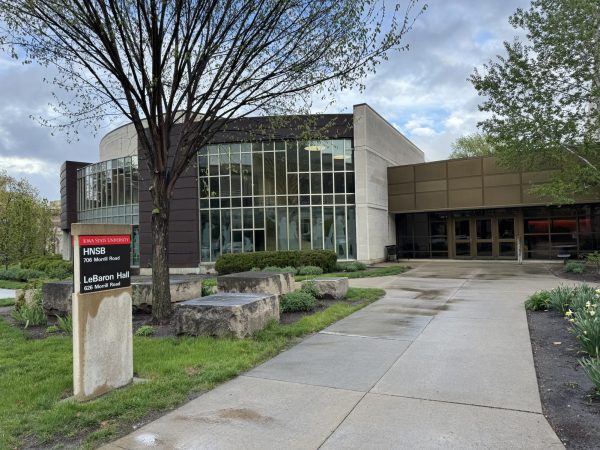Beyond the Badge, pt 2
November 20, 2003
Online Editor’s note: This text is for archival purpose. Please follow this linke to see our web feature.
Editor’s Note: This story is the second of a three-part series about the men and women who serve with the Ames Police, the Department of Public Safety and the Ames Fire Department.
In a small, stark white room in the top floor of the Armory, an ISU Police officer analyzes computer data used to solve some of the campus’s most notorious crimes.
Sgt. Aaron DeLashmutt of the ISU Police uses computer investigation to work on a variety of cases, including child pornography, e-mail harassment, fake identification cards, forgery cases and even death investigations for the ISU Police.
“Just about anything you can think of can be done criminally on the computer,” DeLashmutt said.
The computer investigations lab at the ISU Police Department is one of the only labs of its kind in Iowa, said ISU Police Capt. Gene Deisinger.
“We think that represents the agency well and the Iowa State University well,” Deisinger said.
DeLashmutt works in a small room with five computers surrounding the perimeter of the room. Although he says he currently primarily works alone, every now and then other officers and students in computer investigations help him.
Deisinger said DeLashmutt is a valuable investigator within the department and does very methodical work.
“I’m delighted that he continues to work for us and has not gone into the private sector,” Deisinger said.
DeLashmutt’s daily duties range from analyzing computer data for ISU Police cases or other agencies in Iowa to conducting interviews with possible suspects.
One day in early November he was juggling three different tasks. DeLashmutt was working on a death threat case involving a student who reported receiving a death threat through e-mail. DeLashmutt was searching to determine where that e-mail had originated. He was also using another computer to search for e-mail addresses related to a different case and burned a CD of data and information he had retrieved from a hard drive for another agency in Iowa.
As one of the only police forces in the state of Iowa to be able to do in-house computer analysis and investigations, ISU Police will often assist other agencies.
“If we have the time or ability to help them, we will,” he said.
Beginning a case
DeLashmutt begins working on a case when police receive a tip of illegal activity or they suspect illegal activity themselves.
In several of the child pornography cases at Iowa State, DeLashmutt found the suspicious material by doing a keyword search through the ISU network.
He said police do not regularly monitor the network, but occasionally they browse the network for illegal activity. Police have the same access to the network as any student or faculty member.
“We try to stay aware of what’s out there on the network,” DeLashmutt said.
Once police are alerted to a potential case, they work to establish probable cause and then obtain a search warrant. As soon as police confiscate computers and computer equipment DeLashmutt’s job begins.
The first thing DeLashmutt does is copy the hard drive of the confiscated computer. Lab equipment allows him to search the contents of the confiscated drive.
DeLashmutt uses the evidence he finds on the hard drives to help prove an individual’s guilt or innocence. Computers and equipment obtained by investigators may or may not be returned to the owner after the investigation is completed.
“If it is a case where they don’t get it back sometimes we end up forfeiting it or destroying it,” DeLashmutt said.
For students who commit computer-related crimes, that could mean losing research papers or projects for good, too. He said ISU Police typically suggest students contact the Dean of Student’s Office to try to get the material back.
Past Cases
The first opportunity DeLashmutt had to do computer forensic investigations was also his most memorable case.
Former ISU student Jason Lighthall was arrested in May 2002 after he was suspected of having more than 7,000 images and three gigabytes of movies related to child pornography on his computer.
“That was by far our largest child pornography case and probably our most complex,” DeLashmutt said.
In the Lighthall case, ISU Police officers were able to analyze the images and the computer they confiscated in-house. Before then, computers were sent to a state lab to be analyzed, DeLashmutt said — a process that could take three months to produce results. Now, DeLashmutt said it depends on the caseload and size of the case, but most cases take between three to four weeks.
Since the May 2002 case, there have been six other child pornography-related cases at Iowa State. DeLashmutt said he does not believe child pornography is any more of a problem on the ISU campus than it is anywhere else in the state or in the country.
He said Iowa State has a unique environment that allows police to search the network to identify the source of material, which is not the case on the Internet.
“Everything you do there identifies a specific location,” he said.
For the Ames Police it is harder to tell where an image originates.
ISU Police takes a hard stance on child pornography, which could be one reason for many cases at Iowa State. DeLashmutt said sharing or viewing child pornography continues to victimize those in the images. DeLashmutt spoke of a woman who appeared as a child in films made in the 1970s who now testifies in courts around the country.
“As a 40-year-old, she is still having to relive that,” DeLashmutt said. “It never goes away.”
Child pornography cases are only a portion of the cases DeLashmutt handles. He said another memorable case related to laptop thefts on campus. Police were able to obtain enough evidence to issue an arrest warrant for Curtis Paul, 37, in connection with eight laptop thefts on campus. Police have still not been able to locate Paul.
DeLashmutt said the case was memorable because it took a lot of work and involved more than just computer investigations.
Computer investigations can also assist in cases not directly involving computers.
Each case is interesting in its own way, DeLashmutt said.
“We usually end up learning something new on each one,” he said.
One example of this came in October of 2002 when ISU student Michael Babicz was found dead in his Friley Hall room. Medical examiners later learned Babicz had died of an accidental drug overdose.
Babicz had large amounts of dextromethorphan — a drug commonly found in cough medications — in tissues of his body. DeLashmutt said police discovered Babicz had used his computer to research the drug ‘s effects before he overdosed.
Police were also able to use the timeline function of the computer to determine activity before Babicz’s death. DeLashmutt said investigators were able to get close to the actual time of death.
He said one reason he likes working in computer investigations is most of the cases are completed. Generally, in computer cases police are able to determine whether a crime occurred and who committed the crime.
“You can have closure to it,” DeLashmutt said. “It isn’t going to sit there for years.”
















